Photo by Josh Withers on Unsplash
In the times before the internet, mobile phones and surf cams, surfers had to rely on being able to read and interpret weather charts to ascertain wind strength and direction and swell size and direction.
Learning these skills and building a knowledge bank on the areas they mostly surfed in, led to developing a formula for that area and therefore guided them to the best surf breaks on any given day.
It’s really quite simple and once understood, applies to everywhere in the world, where waves are ridden and beaches enjoyed:
The most important factor in “The Formula” is wind direction, with wind speed being a secondary consideration.
The best beach and surf conditions are when the wind is coming off the land, usually described as “offshore winds”.
In offshore winds, the water surface isn’t choppy and therefore more pleasant for beach goers and the waves are better shaped and more hollow.
Swell size at different surf breaks varies largely due to swell direction and the geographic set up at different beaches.
Tide heights and times are also important, although for surfers different breaks work better at different stages of the tide, depending on the sand formations at those breaks. For swimmers, tides are really important, as when the tide is ebbing and the water drains off the beach from incoming swells and tidal movement, rips are enhanced in and around the inshore holes and gutters along the beach.
How to do it:
Using Windy in this site, get the latest wind forecast for the general area you want to surf or go to the beach in, current wind speed and direction and swell size and direction.

Look at maps of the coastline and understand which way the beaches face, so you can easily figure out which beaches and surf breaks, the current and forecast winds will be blowing “offshore”.
Let’s look at the Gold and Sunshine Coasts:
SW to NW winds: You will the find the best conditions on the beach breaks along the open stretches of beach. If the winds are light SW it can be good on the points. If it’s strong SW there can be some cross chop. Swimmers need to be aware that rips and sweep can work along the open stretches of beach, particularly on ebbing tides, so swim only in patrolled areas marked by the red and yellow flags
NW to NE winds: Look for beach breaks on the south side of headlands and Southport Spit. While the wind is light NW, which is usually early in the mornings there might be some clean waves for surfers for a kilometre or so south of the headlands. Swimmers need to be aware that rips and sweep can work in the corners on the south side of headlands and along the open stretches of beach, particularly on ebbing tides, so swim only in patrolled areas marked by the red and yellow flags
E/NE to E/SE winds: In SE Qld, these are “onshore” winds. ie blowing from the ocean onto the shore and there’s not many places along the southern Qld coast where these winds are favourable for clean waves and beach conditions.
Surf quality is usually poor, although in E/SE winds, provided they aren’t too strong, there may be better beach conditions and waves in the corners of the bays on the north side of headlands. Swimmers should be aware that bluebottles may be blown or washed ashore in summer when these onshore winds are most prevalent.
SE to SW/S winds: These winds are the most favourable for SE Qld beaches and waves. The reason is that we have a lot of headlands like Noosa, Mooloolaba, Burleigh, Kirra Greenmount and Point Danger that have sandy bays on the north side of them. SE to SW/S winds are offshore on the point surf breaks and bays on the northern side of these headlands as these beaches face north. Swimmers should be aware that rips and swell can work in these bays, particularly on ebbing tides and it’s important to swim only in the patrolled areas.

Photo by Lukas Spirig on Unsplash
Swell size and direction: Obviously swell size is an important factor in figuring out whether to go surfing or swimming not and whether it’s too big for your level of surfing, swimming and fitness. Swell direction is another nuance to be considered and is something that develops in your knowledge in regard to specific surf breaks.
There are a couple of ways to ascertain swell size and direction. You can use Windy by selecting swell in the menus.
This will show swell size and direction

Another way is to look at the wave buoys off the southern Qld coast. These buoys are often well offshore and show bigger swell than what you will encounter at the beach, as swells lose size and power as they travel inshore in increasingly shallower water. You should look at the Hsig (The significant wave height (in metres), defined as the average of the highest one-third of wave heights in a 26.6 minute wave record.) for the most indicative reading on offshore swell size and you should also be aware that southerly swells track parallel to our SE Qld Coast and are often much smaller as they refract around headlands.
